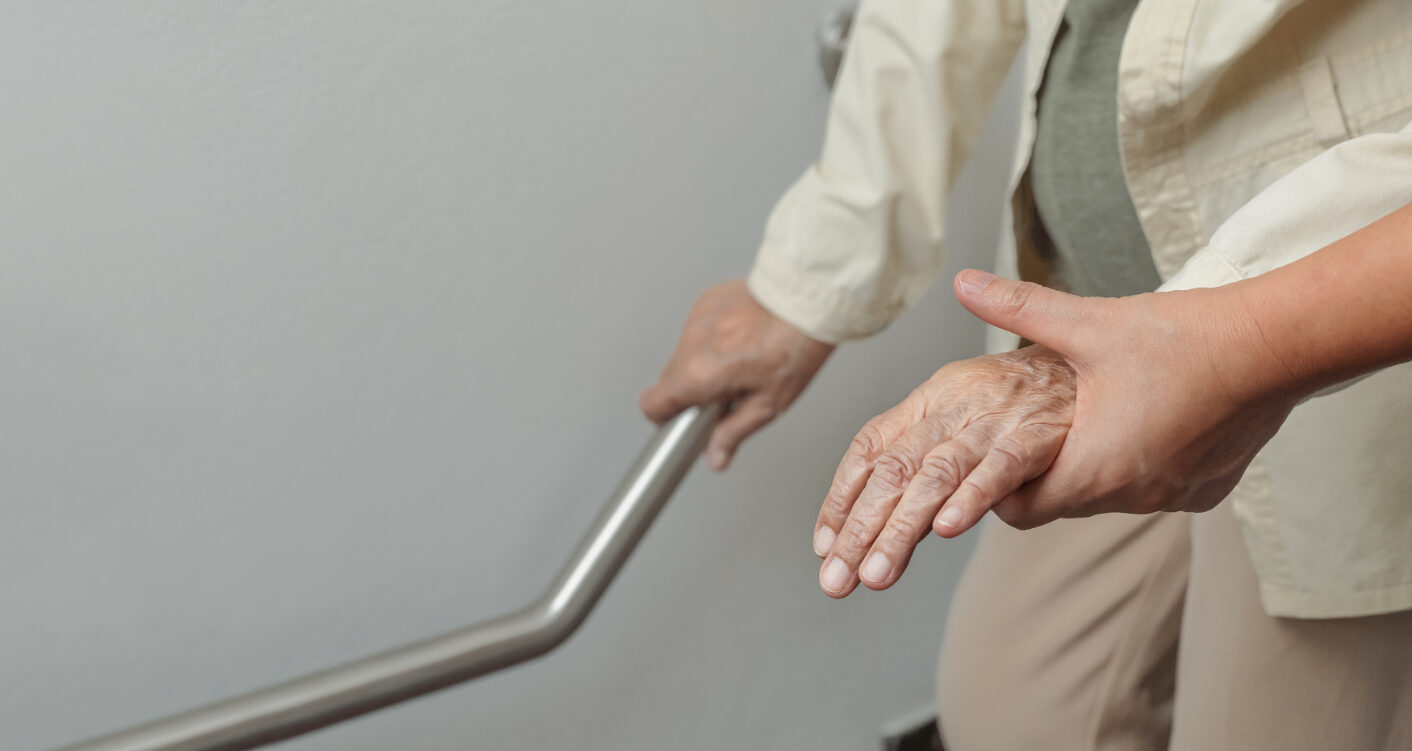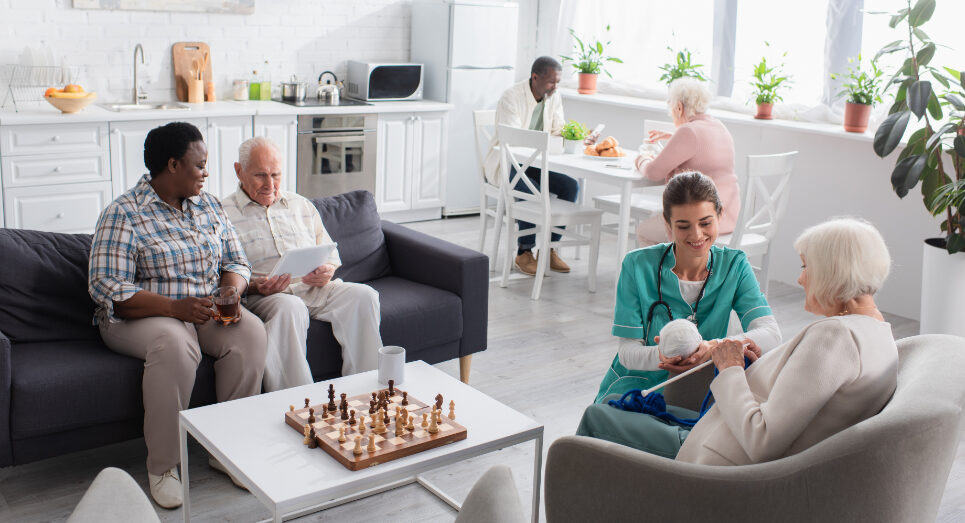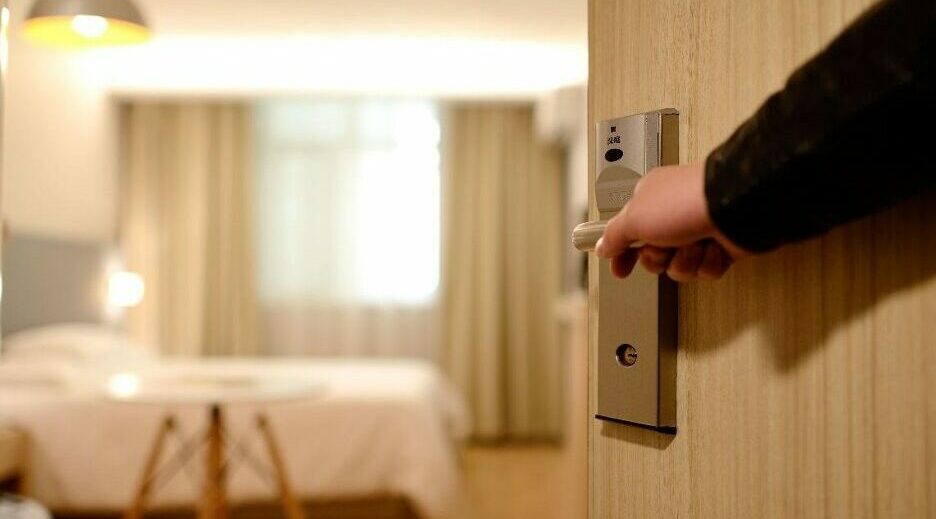Germs are everywhere, and they love nothing more than weakened immune systems. Without a rigorous cleaning plan, infections can run rampant among nursing home clients, patients, and staff.
This isn’t news to anyone in our industry. Most of the people reading this could rattle off the names of three or four heavy-duty cleaning products without a moment of hesitation.
Especially during the Covid era, we have imposed strict protocols to ensure every surface is regularly wiped down.
But there’s a problem…
Germs come back.

Think of this, how long does a doorknob or handrail stay germ-free after you’ve disinfected it?
Every hand that touches the handle carries germs from wherever that hand has been. Does your disinfectant continue working after the first hand has touched it?
The germs regroup and start multiplying almost immediately after the surface is cleaned. The solution most institutions use is to have a regular cleaning schedule, a constant battle, to ensure germs never get a foothold.
But in an ideal world, your cleaning protocols would work non-stop. You want something that kills germs between wipe-downs, ensuring they never get a chance to spread. That is what Dyphox’s antimicrobial coating spray can do for your nursing home.
This diagram illustrates the impact Dyphox can have. Note that the germ load increases above the hygiene limit between wipe-downs when Dyphox is not used. However, using Dyphox, the germ load remains consistently low.

What is Dyphox?
Dyphox is an antimicrobial coating that kills germs, fungi, spores, bacteria, and viruses. It’s non-toxic and doesn’t damage the surface. Application takes minutes, starts working immediately, and lasts up to a year.
But Antimicrobial coatings have been around forever; what makes Dyphox different?
Almost all antimicrobial coatings require liquid to be activated. This is true of silver, copper, zinc, titanium dioxide, biocides(for example, triclosan, benzalkonium chloride, isothiazolinone, or chlorhexidine), and quaternary ammonium compounds(QUATS).
What does this mean for you? It means that even though you might have an antimicrobial coating – it still needs to be wiped down regularly. Without liquid, the above coatings are inactive and ineffective on dry surfaces.
Dyphox works on dry surfaces
Dyphox is photodynamic, meaning it’s activated by light. This allows it to work on dry surfaces as well as wet ones. Being activated by light is what makes Dyphox work around the clock.
It doesn’t even need a lot of light or natural light. The visual light range, the range of light that the human eye can see, is 400-700nm. Any level of light within this range is enough to activate Dyphox. You don’t need any measuring equipment to check if it’s working – the human eye is enough.
Put simply, if there’s enough light to see the surface – Dyphox is working.
How Dyphox kills germs
When a Dyphox-protected surface is exposed to light, it creates singlet oxygen. Singlet oxygen occurs naturally in nature and is completely harmless to humans.
Singlet oxygen destroys germs through oxidization. Meaning it breaks down the wall of the microorganisms by starving the germ of oxygen. In the era of superbugs like MRSA, bacteria resistant to existing anti biotics, the application of singlet oxygen represents a major breakthrough.
Existing research shows at present there is no resistance to singlet oxygen, the exciting thing is that it is not expected due to the process singlet oxygen uses.
Dyphox Antimicrobial Coating and Covid 19
Older individuals are at greater risk of complications, including mortality, due to mutli resistant bacteria infections, Covid 19 and the Flu.. An antimicrobial coating such as Dyphox is essential to nursing homes in the battle against the spread of these infectious viruses.
Singlet oxygen has been tested and proven effective against all types of viruses and all types of bacteria. It kills 99.99% of germs – including SarsCoV2.
Not only that, but it is likely to remain effective against new and evolving strains.
Where should you apply Dyphox?
Dyphox’s antimicrobial spray for nursing home use can be applied safely to almost any surface. Unlike many other antimicrobial coatings, it doesn’t damage the surface over time.
You can have absolute confidence in Dyphox when applying it to plastic, aluminium, stainless steel, or glass. It will not stain or damage the surface.
Some antimicrobial coatings or cleaning products can cause allergic reactions in humans. Dyphox does not.
Independent third-party dermatological testing awarded Dyphox an ‘Excellent’ rating, citing that it had no toxic-irritative effects.
Also, because Dyphox employs singlet oxygen to kill germs, it is completely non-toxic. In fact, Dyphox is so safe that it can be applied to surfaces used for preparing food.
Dyphox in Action

Dyphox has been tested extensively, backed up by over a decade of research, before being made available commercially. This research has included real-world case studies.
These studies show that Dyphox helps seal hygiene gaps and protect patients by reducing the bacterial load on surfaces.
In 2017/18, the Bavarian State Ministry of Economic Affairs and Media, Energy and Technology tested Dyphox in a hospital setting. Compared to the control, Dyphox reduced the risk of high bacterial loads on surfaces by up to 67%.
Another study carried out with the Regensburg bus company confirmed these findings. This is especially impressive when you consider the sheer volume of people who will mount or dismount a public bus on any given day, with each passenger carrying with them a fresh set of microbes.
Learn More
Dyphox is now available in Ireland. Contact us here for more information.

